These Are the Cars With the Best Infotainment Systems, According to J.D. Power

J.D. Power and Associates is supremely interested in multimedia systems these days. In fact, in now incorporates audio, communication, entertainment, and navigation (ACEN) into its initial quality study. If an automaker wants one of J.D. Power’s tombstone-shaped awards, it now has to ensure its multimedia equipment isn’t vexing to consumers. Unfortunately, ACEN has proven the most problematic category for new vehicle owners since its addition to the annual survey three years ago.
The research and marketing firm recently decided to break out its ACEN scores to see which vehicles had the best infotainment systems. However, in this instance, what constitutes superior hardware is simply a lack of customer complaints. For J.D. Power, multimedia system quality is determined by the number of problems experienced per 100 vehicles over the first 90 days of ownership.
Since potential problems include everything from technical failures and overall features to how well the system was explained by the dealer and plain general satisfaction, decoding what makes a particular system truly bad is difficult. But a lower frequency of complains always means a better product. Which models shined the brightest?
It might surprise you, but the 2018 Ford Mustang possessed the “lowest” score of any vehicle. With just 7.3 reported issues out of 100 units, the Stang easily bested every other vehicle on the survey. Interestingly, J.D. Power decided to place it in the “midsize” category — which also credited the Kia Sorento and Nissan Frontier for possessing vastly superior infotainment systems.
The Kia Rio walked away with top honors in its class. With only 9.3 problems reported over 100 vehicles, Kia’s subcompact had the best overall score of any pint-sized mainstream model. In J.D. Power’s small car segment, its score kept it just ahead of the Chevrolet Bolt and Kia Sportage.
The small premium segment fared much worse, likely due to the complexities of the interface. Luxury vehicles typically contain additional features and digital options that mainstream vehicles lack, resulting in a harder-to-navigate multimedia system. Leading the pack for fancy shmancy small vehicles was the BMW 2 Series, with 16.7 reported issues out of 100 vehicles. It was pursued by the slow-selling Acura ILX and more-popular BMW X1.
J.D.’s “compact segment” showed the Kia Forte as the best for in-car infotainment. The Forte managed an impressive 10.2 problems out of 100 cars. The Chevrolet Cruze was runner up, with the Hyundai Ioniq and Volkswagen Beetle tied for third at 12.3 issues per 100 units. For the compact premium cars, Porsche’s 718 matched the Kia Rio as the auto with one of the least problematic infotainment system on the market (at least according to this survey). It was followed by the Porsche Macan and Lincoln MKC.
For large vehicles, Ford’s Taurus narrowly beat out the burly Expedition with 12.5 reported issues. They were tailed by the Chevrolet Silverado, which had 13.1 problems per 100 vehicles. Meanwhile, the BMW 7 Series bested the rest of the premium large vehicle segment by a wide margin. It managed just 10.5 reported problems out of 100 cars while the Genesis G90 and Cadillac Escalade saw 15.1 and 16.1 issues, respectively.
Other than J.D. Power’s complete inability to effectively categorize automobiles, the takeaway from this study should be that mainstream models have easier to use infotainment systems. Ford, Kia, and Hyundai consistently performed well using the outlet’s ACEN assessment. On the luxury side of things, Porsche and BMW seemed to walk away with more victories than the rest.
However, why is another question. Hyundai Group definitely has ease of use down pat without culling functions, but an automaker like BMW is more complicated. While iDrive has become easier to manage in its later incarnations, it’s a more complicated system then what you’d find on your average Kia. BMW’s Motion controls are cute but also a little clumsy. And there’s loads of menus. Still, there are also a few alternative ways to navigate the brand’s infotainment systems. Perhaps BMW has simply struck a decent balance between heaps of features and the various ways you can tackle them. Don’t like motion controls? Use the touch screen. Don’t like the touch screen? Use the iDrive knob.
“In-car multimedia has been a problematic category for automakers for several years, as ever-more elaborate navigation, voice recognition and entertainment systems have proliferated in vehicles of every type,” said Brent Gruber, Senior Director of Automotive Quality Practice for J.D. Power.
“While the area is still the leading cause of new-vehicle complaints — with voice recognition technology continuing to lead the way as the number one complaint for a sixth consecutive year — we are seeing some serious improvement across the board, with some manufacturers really raising the bar on delivering quality multimedia technology experiences for their customers.”
We’d still recommend actually interfacing with a vehicle’s multimedia display extensively before you buy, as you might find yourself more or less digitally inclined than your contemporaries. But it’s definitely worth taking these results for a mental lap before you start shopping.
[Images: Ford; Kia]

A staunch consumer advocate tracking industry trends and regulation. Before joining TTAC, Matt spent a decade working for marketing and research firms based in NYC. Clients included several of the world’s largest automakers, global tire brands, and aftermarket part suppliers. Dissatisfied with the corporate world and resentful of having to wear suits everyday, he pivoted to writing about cars. Since then, that man has become an ardent supporter of the right-to-repair movement, been interviewed on the auto industry by national radio broadcasts, driven more rental cars than anyone ever should, participated in amateur rallying events, and received the requisite minimum training as sanctioned by the SCCA. Handy with a wrench, Matt grew up surrounded by Detroit auto workers and managed to get a pizza delivery job before he was legally eligible. He later found himself driving box trucks through Manhattan, guaranteeing future sympathy for actual truckers. He continues to conduct research pertaining to the automotive sector as an independent contractor and has since moved back to his native Michigan, closer to where the cars are born. A contrarian, Matt claims to prefer understeer — stating that front and all-wheel drive vehicles cater best to his driving style.
More by Matt Posky
Latest Car Reviews
Read moreLatest Product Reviews
Read moreRecent Comments
- Master Baiter I thought we wanted high oil prices to reduce consumption, to save the planet from climate change. Make up your minds, Democrats.
- Teddyc73 Oh look dull grey with black wheels. How original.
- Teddyc73 "Matte paint looks good on this car." No it doesn't. It doesn't look good on any car. From the Nissan Versa I rented all the up to this monstrosity. This paint trend needs to die before out roads are awash with grey vehicles with black wheels. Why are people such lemmings lacking in individuality? Come on people, embrace color.
- Flashindapan Will I miss the Malibu, no. Will I miss one less midsize sedan that’s comfortable, reliable and reasonably priced, yes.
- Theflyersfan I used to love the 7-series. One of those aspirational luxury cars. And then I parked right next to one of the new ones just over the weekend. And that love went away. Honestly, if this is what the Chinese market thinks is luxury, let them have it. Because, and I'll be reserved here, this is one butt-ugly, mutha f'n, unholy trainwreck of a design. There has to be an excellent car under all of the grotesque and overdone bodywork. What were they thinking? Luxury is a feeling. It's the soft leather seats. It's the solid door thunk. It's groundbreaking engineering (that hopefully holds up.) It's a presence that oozes "I have arrived," not screaming "LOOK AT ME EVERYONE!!!" The latter is the yahoo who just won $1,000,000 off of a scratch-off and blows it on extra chrome and a dozen light bars on a new F150. It isn't six feet of screens, a dozen suspension settings that don't feel right, and no steering feel. It also isn't a design that is going to be so dated looking in five years that no one is going to want to touch it. Didn't BMW learn anything from the Bangle-butt backlash of 2002?



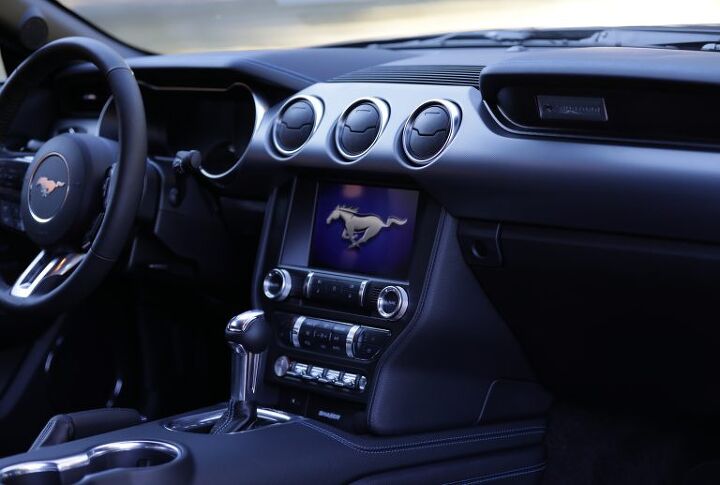


















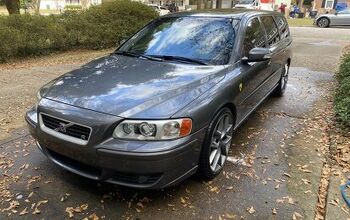
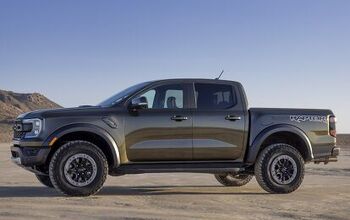


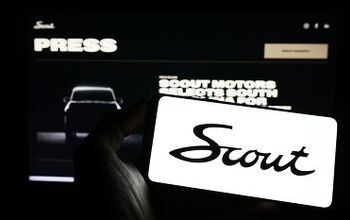
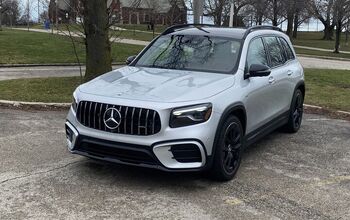
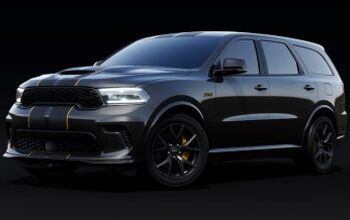



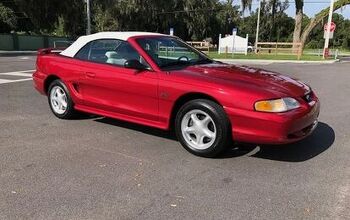
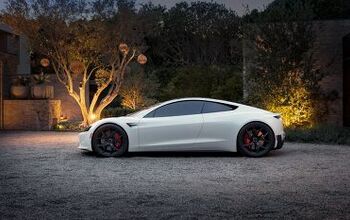
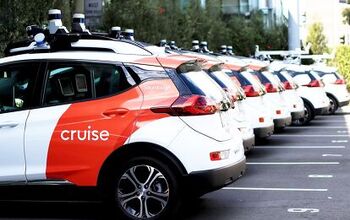
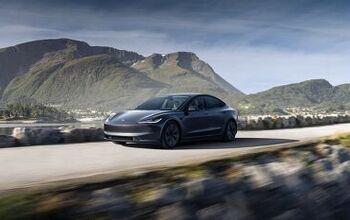
Comments
Join the conversation
What's killing infotainment reliability are the phone interfaces. The phones update too frequently and the auto manufacturers can't keep up. It seems like every major phone update will prevent Android auto from working correctly. Then the customer blames the car. I started having issues in my Silverado. I thought it was the truck. Then I got a company car from my employer's brand and it had the same issue. A few months later, another major phone update and it started working. While I'm not a BMW fan, I give them credit for retaining the control knob. I hate touch controls in cars because you have to look at what you're doing. With the knob, it's detents allow for use without looking at the screen. I know most people like the touchscreens, so I'm happy they give you multiple options.
Realistically I have SYNC3 in my 16. After the first update and swapping in the upgraded USB ports I mainly use apple carplay. The 18’s would have CarPlay standard so that’s probably what’s scoring them so high. That said sync3 is better and faster than the Microsoft Sync I had in my 13.